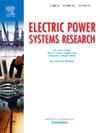基于混合机器学习方法的可再生集成微电网自适应故障诊断
IF 4.2
3区 工程技术
Q2 ENGINEERING, ELECTRICAL & ELECTRONIC
引用次数: 0
摘要
可靠的故障检测、分类和定位对于保持智能电网的可靠性和自愈能力至关重要,特别是在与可再生能源集成的微电网中。本文提出了一种基于k近邻(KNN)和人工神经网络(ANN)的自适应故障诊断框架,该框架模拟了一个包含传统和可再生能源、动态负荷和分布式输电线路的实际微电网架构。该框架评估k近邻(KNN)和人工神经网络(ANN)的性能,直接从每个单元的原始电压和电流测量中进行故障检测、分类和定位,从而避免了基于图像的转换或复杂的特征提取。通过利用测量的单位归一化,该方案实现了不同微电网配置的兼容性。这种标准化的方法增强了可伸缩性和灵活性,确保了在不同操作条件下的可靠性能,并促进了实际系统中的实际实施。仿真结果表明,混合KNN-ANN框架在故障检测和分类方面的准确率达到99.9%,在故障定位方面的准确率达到98.45%,在智能保护应用中具有较强的可靠性。为了验证鲁棒性和可扩展性,系统以单位表示建模,并在两个额外的微电网配置上进行测试。研究结果证实了所提出方法的适应性和有效性,突出了其作为现代智能电网基础设施智能保护可靠解决方案的潜力。本文章由计算机程序翻译,如有差异,请以英文原文为准。
Adaptive fault diagnosis in renewable integrated microgrids using hybrid machine learning approach
Reliable fault detection, classification, and localization are crucial for maintaining the reliability and self-healing capabilities of smart grids, particularly in microgrids integrated with renewable energy sources. This paper presents an adaptive fault diagnosis framework using K-Nearest Neighbors (KNN) and Artificial Neural Networks (ANN), that models a practical microgrid architecture incorporating conventional and renewable energy sources, dynamic loads, and distributed transmission lines. The framework evaluates the performance of K-Nearest Neighbors (KNN) and Artificial Neural Networks (ANN) for fault detection, classification, and localization directly from the raw voltage and current measurements in per unit, thereby avoiding image-based transformations or complex feature extraction. By leveraging per-unit normalization of measurements, the proposed scheme achieves compatibility across diverse microgrid configurations. This standardized approach enhances scalability and flexibility, ensuring reliable performance under varying operating conditions and facilitating practical implementation in real-world systems. Simulation results demonstrate that the hybrid KNN–ANN framework achieves 99.9% accuracy in fault detection and classification, and 98.45% accuracy in fault localization demonstrating strong reliability for intelligent protection applications. To validate robustness and scalability, the system is modelled in per-unit representation and tested on two additional microgrid configurations. The findings confirm the adaptability and effectiveness of the proposed methodology, highlighting its potential as a reliable solution for intelligent protection in modern smart grid infrastructures.
求助全文
通过发布文献求助,成功后即可免费获取论文全文。
去求助
来源期刊

Electric Power Systems Research
工程技术-工程:电子与电气
CiteScore
7.50
自引率
17.90%
发文量
963
审稿时长
3.8 months
期刊介绍:
Electric Power Systems Research is an international medium for the publication of original papers concerned with the generation, transmission, distribution and utilization of electrical energy. The journal aims at presenting important results of work in this field, whether in the form of applied research, development of new procedures or components, orginal application of existing knowledge or new designapproaches. The scope of Electric Power Systems Research is broad, encompassing all aspects of electric power systems. The following list of topics is not intended to be exhaustive, but rather to indicate topics that fall within the journal purview.
• Generation techniques ranging from advances in conventional electromechanical methods, through nuclear power generation, to renewable energy generation.
• Transmission, spanning the broad area from UHV (ac and dc) to network operation and protection, line routing and design.
• Substation work: equipment design, protection and control systems.
• Distribution techniques, equipment development, and smart grids.
• The utilization area from energy efficiency to distributed load levelling techniques.
• Systems studies including control techniques, planning, optimization methods, stability, security assessment and insulation coordination.
 求助内容:
求助内容: 应助结果提醒方式:
应助结果提醒方式:


